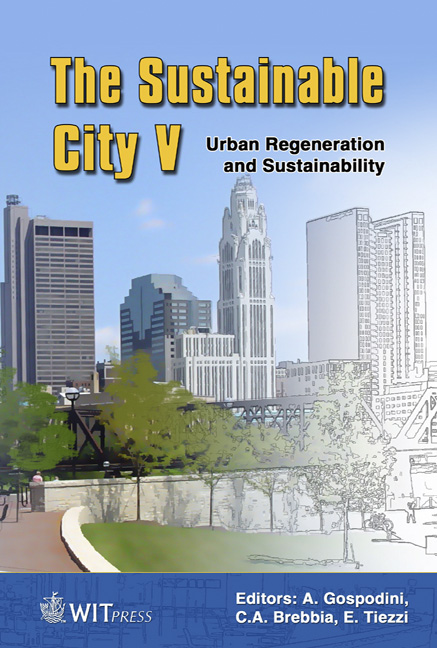Monitoring Of The Habitat Agenda In Mexico: The Local Urban Observatory
Price
Free (open access)
Transaction
Volume
117
Pages
8
Page Range
175 - 182
Published
2008
Size
335 kb
Paper DOI
10.2495/SC080171
Copyright
WIT Press
Author(s)
O. Frausto-Martínez & M. Welch-Guerra
Abstract
Indicators are regarded as important tools for the implementation of Monitoring of the Agenda habitat in Mexico. Since the beginning of the debate about indicators in 1992 different concepts have been developed. Some of the existing indicator sets have been tested already. The results have led to the conclusion that the indicator concepts of the \“first period” need to be improved. One of the most important outcomes of the experiences until now is that it is almost impossible to develop indicators or indicator sets that are suitable for every spatial area or different region. The results of the testing-program of the UN Habitat Mexico confirm this fact. In the present contribution 37 experiences of sustainability indicator development for a specific regional context are presented. The examples from 37 cities underline the necessity of developing indicator concepts based on the specific problems and goals for the region without neglecting the global principles of sustainability. Furthermore, the description of both case studies (methodology of selection, indicators and their application) illustrates the problems and challenges of indicator concepts for a specific region. Finally the author gives some recommendations for the development of sustainability indicators for a specific regional context in Mexico. Keywords: habitat agenda, Mexico, indicators, local urban observatory. 1 Introduction In 1996 the HABITAT II City Summit was convened to consider the status of various issues addressed at United Nations conferences – Rio 92, (UNCED, Environment and Development), Vienna 93 (Human Rights), Cairo 94
Keywords
habitat agenda, Mexico, indicators, local urban observatory.





